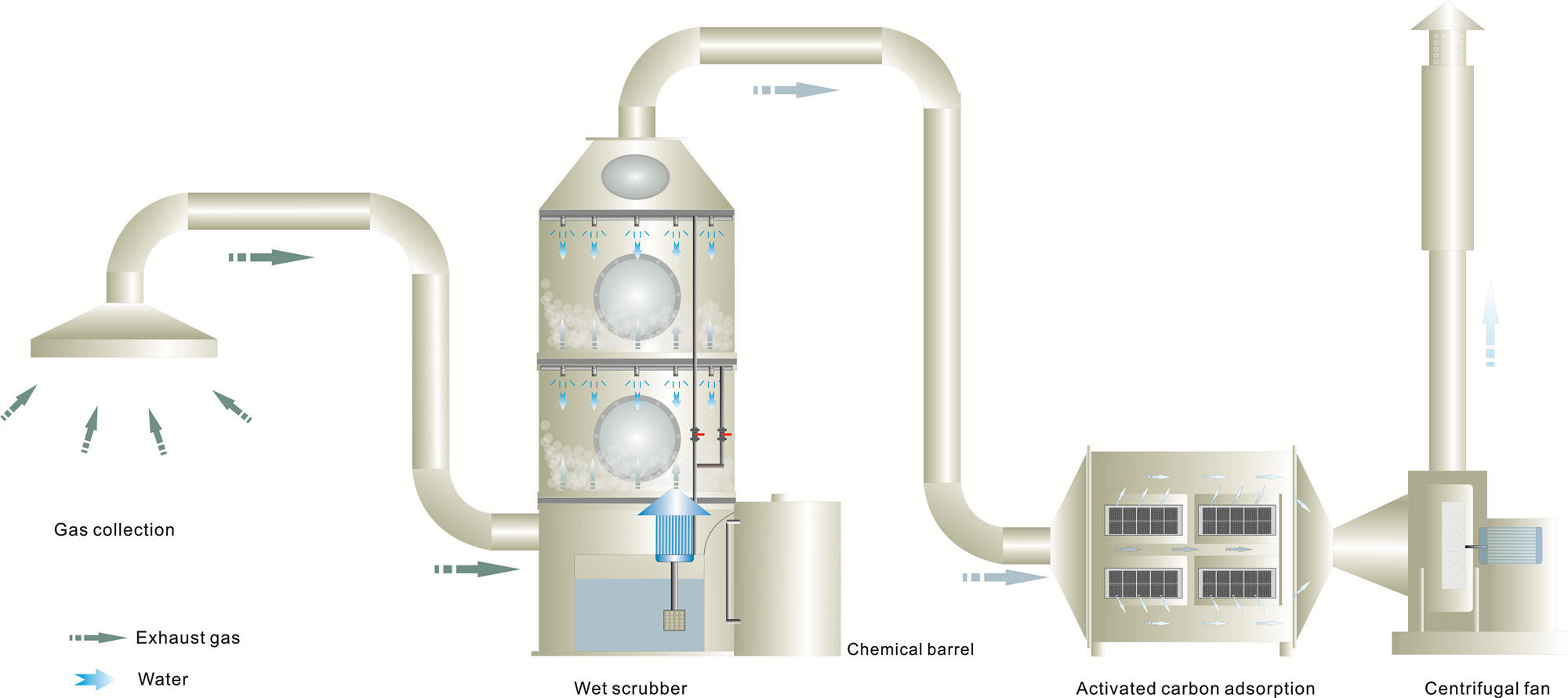The packing layer in the wet scrubber serves as a mass transfer device for the contact components between the gas and liquid phases. The bottom of the packing tower is equipped with packing support plates, and the packing is placed on the support plates in a random pile. A packing pressure plate is installed above the packing to prevent it from being blown by the rising airflow. The spray liquid of the wet scrubber is sprayed onto the packing from the top of the tower through the liquid distributor and flows down the surface of the packing. The gas is fed in from the bottom of the tower, and after being distributed by the gas distribution device, it continuously passes through the gaps in the packing layer in countercurrent with the liquid. On the surface of the packing, the gas and liquid two phases are in close contact for mass transfer. When the liquid flows down the packing layer, the wall-flow phenomenon sometimes occurs. The wall-flow effect causes uneven distribution of the gas and liquid phases in the packing layer, thereby reducing the mass transfer efficiency. Therefore, the packing layer in the wet scrubber is divided into two sections, with a redistribution device in the middle, which is sprayed onto the lower packing after redistribution.
As a new type of spray absorption equipment, wet scrubber has been widely used in exhaust gas purification. It develops the concept of a fluidized bed into vapor-liquid mass transfer equipment so that the filler in the wet scrubber is in a fluidized state so that the mass transfer process can be enhanced.

Its characteristics are high gas velocity, large processing capacity, lightweight tower, relatively uniform vapor-liquid distribution, and not easy to be blocked by solid and viscous materials. In particular, due to the strong turbulence in the tower, the mass, and energy transfer are strengthened, so that the tower diameter and the tower height can be greatly reduced. The tower handles a large amount of air, the air velocity of the empty tower is 1.5~6.0m/s, the spray density is 20~110m3/(m2·h), the pressure loss is 1 500~3 800Pa, and the demister of the wet scrubber adopts cyclone plate The mist eliminator uses the centrifugal force to remove the mist by causing the gas to pass through the tray to generate a rotating motion. Its mist eliminator efficiency can reach 98%-99%, the structure is simple and the pressure drop is small.
The wet scrubber has an obvious effect on the purification treatment of various corrosive gases, and can effectively remove hydrogen chloride gas (HCl), hydrogen fluoride gas (HF), ammonia (NH3), sulfuric acid mist (H2SO4), chromic acid mist (CrO3), hydrogen cyanide Acid gas (HCN), alkali vapor (NaOH), formalin (HCHO) and other water-soluble gases. The wet scrubber has high purification efficiency, simple operation and management, and long service life. The acid-base waste gas after purification treatment meets the national emission standards.
This equipment is divided into a single tower body and a double tower body. It adopts a circular tower body and is connected in sections by flanges. Specifically, it is composed of a liquid storage tank, a tower body, an air inlet section, two spray layers, two filler layers, a swirling defogging layer, an inspection window, and an air outlet.
Scope of application: oil refineries, rubber plants, leather factories, printing plants, chemical plants, Chinese and Western medicine plants, metal foundries, plastic recycling plants, spray solvents, food processing plants, meat processing plants, slaughterhouses, poultry feed plants, papermaking Purification and treatment of organic and inorganic waste gas from factories, sewage treatment plants, garbage transfer stations, etc.